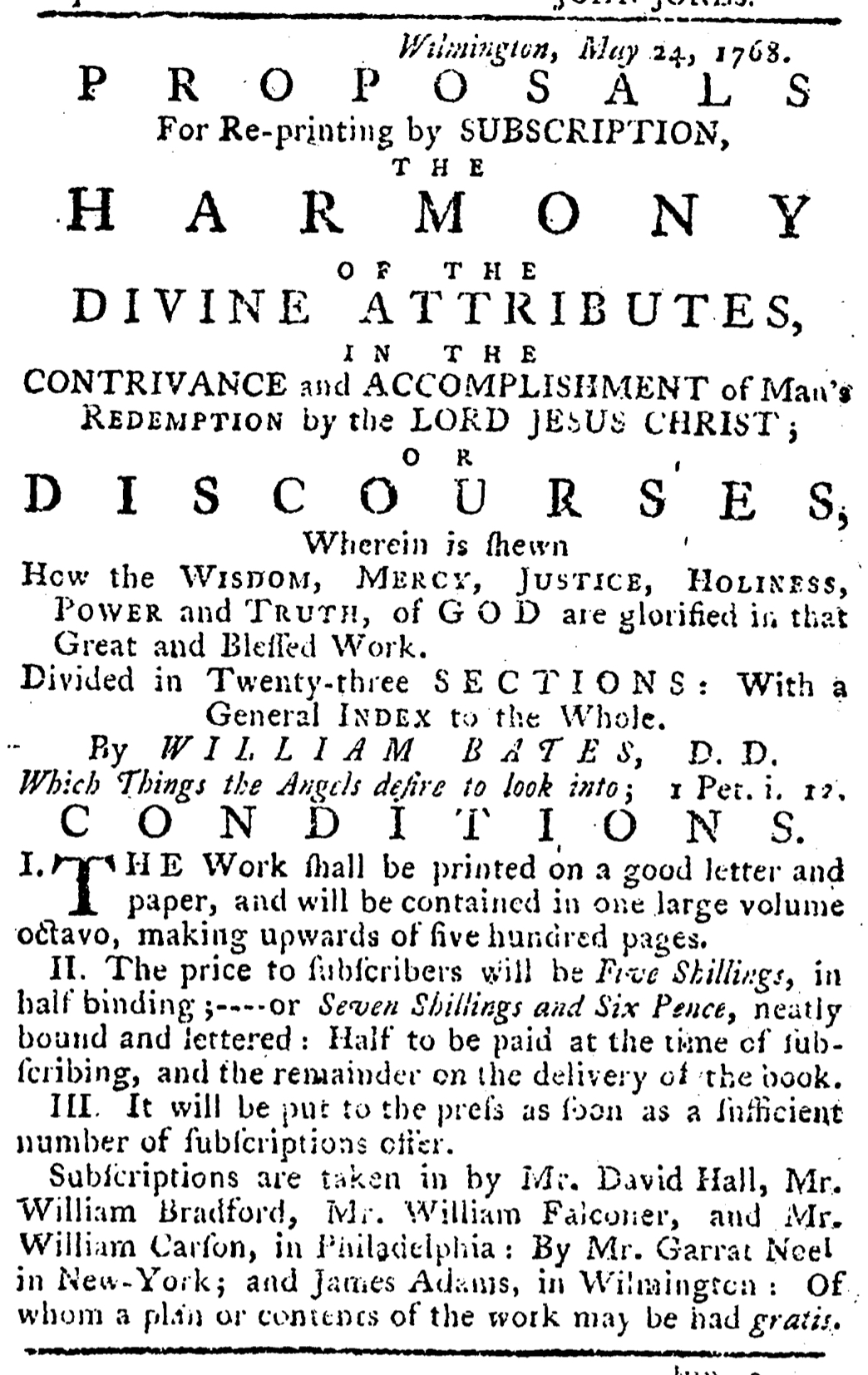What was advertised in a colonial American newspaper 250 years ago today?

“JUST PUBLISHED … THE WILMINGTON ALMANACK, for 1774.”
It was a sign of the changing seasons, the arrival of fall, for readers of the Pennsylvania Gazette and the Pennsylvania Journal. On September 15, 1773, James Adams published one of the first advertisements for almanacs for 1774. Soon, many other printers and booksellers would advertise other almanacs in the Pennsylvania Gazette, the Pennsylvania Journal, and other newspapers throughout the colonies. That would include Hall and Sellers, the printers of the Pennsylvania Gazette, and William Bradford and Thomas Bradford, the printers of the Pennsylvania Journal, inserting advertisers for almanacs they published. The next day, Clementina Rind, printer of the Virginia Gazette, ran an advertisement for the Virginia Almanack for the Year of Our Lord 1774, drawing readers into the same annual ritual of marketing, selecting, and purchasing the popular pamphlets.
For readers in Philadelphia and its hinterlands, James Adams advertised two almanacs that came off the presses at his printing office in Wilmington, Delaware. Both included the kinds of information that made almanacs both entertaining and useful. The Wilmington Almanack, for instance, contained the usual astronomical observations as well as extracts from The Family Physician, “shewing people what is in their own power both with respect to the prevention and cure of diseases,” an “address to the Ladies, on the present fashions” (conveniently ignoring that men just as eagerly participated in consumer culture), and both “jests” and “wise sayings.” The reference material included “tables of interest at 6 and 7 per cent,” schedules for courts, fairs, and “Friends yearly meetings,” and descriptions of roads in the region. Adams also sought to compete with printers in Philadelphia by publishing his own Pennsylvania Town and Country-Man’s Almanack. Like the Wilmington Almanack, its contents included astronomical observations, schedules for courts, fairs, and Quaker meetings, descriptions of roads, and tables of interest. For the edification of readers, it also featured “two extraordinary letters, one of them from Sir Walter Rawleigh, to his wife, after his condemnation; the other from James Earl of Marlborough, a little before his death, to his friend” as well as “memoirs of several other great and worthy men” and an essay “concerning casualties and adversities.” Adams listed Jonathan Zane and William Wilson, both on Second Street in Philadelphia, as local agents who sold the Pennsylvania Town and Country-Man’s Almanack.
Throughout the fall, the pages of the Pennsylvania Gazette, Pennsylvania Journal, and other colonial newspapers would become increasingly crowded with advertisements for almanacs. As the new year approached, printers and booksellers would offer dozens of titles for consumers to select. Some printers would also market discounts for purchasing in volume, hoping to enlist shopkeepers in town and country in selling and distributing almanacs. As much as changes in the weather and fewer hours of daylight, the appearance of advertisements for almanacs signaled the arrival of fall for the reading public.

